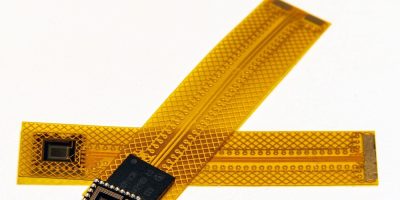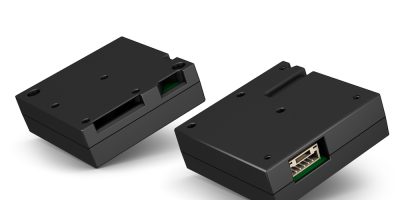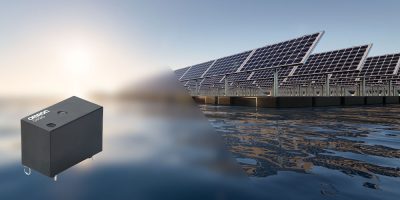Infineon has made significant progress in developing the technology for capacitive micromechanical ultrasonic transducers (CMUT). The technology enables the company to manufacture the first integrated one-chip solution for MEMS-based ultrasonic transducer that offers a smaller footprint, improved performance, and higher functionality. Such integration makes the new device ideal for developing new ultrasonic applications and improving existing applications in consumer electronics, the automotive industry, and medical technology.
Unlike conventional piezoelectric bulk materials, which rely on the deformation of the material itself, CMUT transmit and detect ultrasonic waves via the deflection of a micro-machined, semiconductor diaphragm. This principle, along with their compact size, low-power consumption, and high performance, enable the devices to enhance various ultrasound applications. Compared to a discrete solution, Infineon’s monolithic integration of MEMS and ASIC reduces the noise floor by 20 times and improve the absolute signal by 1000 times compared to conventional piezoelectric ceramics of a similar size. Leveraging its expertise in semiconductor design and manufacturing, Infineon can apply its advanced technology across a wide range of industries, from consumer electronics to medical devices.
Infineon’s CMUT technology enables solid-state touch buttons under any solid material, such as glass and even metal, without deforming the surface. This allows a more durable and reliable alternative to conventional mechanical buttons to be implemented, reducing the risk of wear and tear, and increasing the overall lifespan of devices. Compared to capacitive touch buttons, which can be affected by environmental factors such as humidity and temperature, CMUT-based touch buttons offer full water compatibility as well as high EMC robustness. Since the technology reduces the size of the buttons, they can be integrated into various devices, from smartphones to industrial control panels. Examples include touch buttons below the metal frame of a mobile phone or replacing car door handles for a neat design.
Several home appliance devices can profit from Infineon’s CMUT as soon as they require liquid level sensing. CMUT offer several advantages, including continuous fill level measurement, low power consumption, and easy, non-invasive mounting below the bottom of the tank. The latter is important to measure, e.g., chemicals in washing machines or dish washers, where contact electrodes are at risk to corrode.
The CMUT technology can also be used to develop innovative medical devices that utilise ultrasound technology, such as wearable devices for vital signs monitoring, health tracking, and non-invasive medical diagnostics. Leveraging CMUT technology, the devices provide continuous monitoring and feedback rather than a single measurement, which can detect potential health issues earlier and improve patient outcome. With their compact size and low-power requirements, they are ideal for wearable and point-of-care applications.







